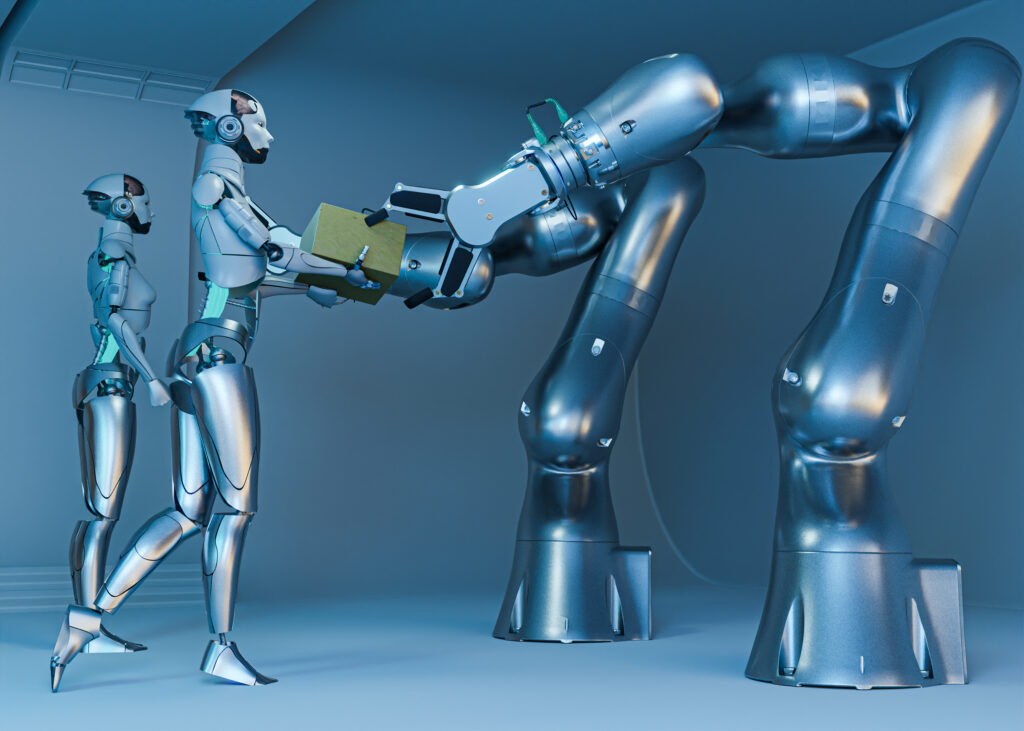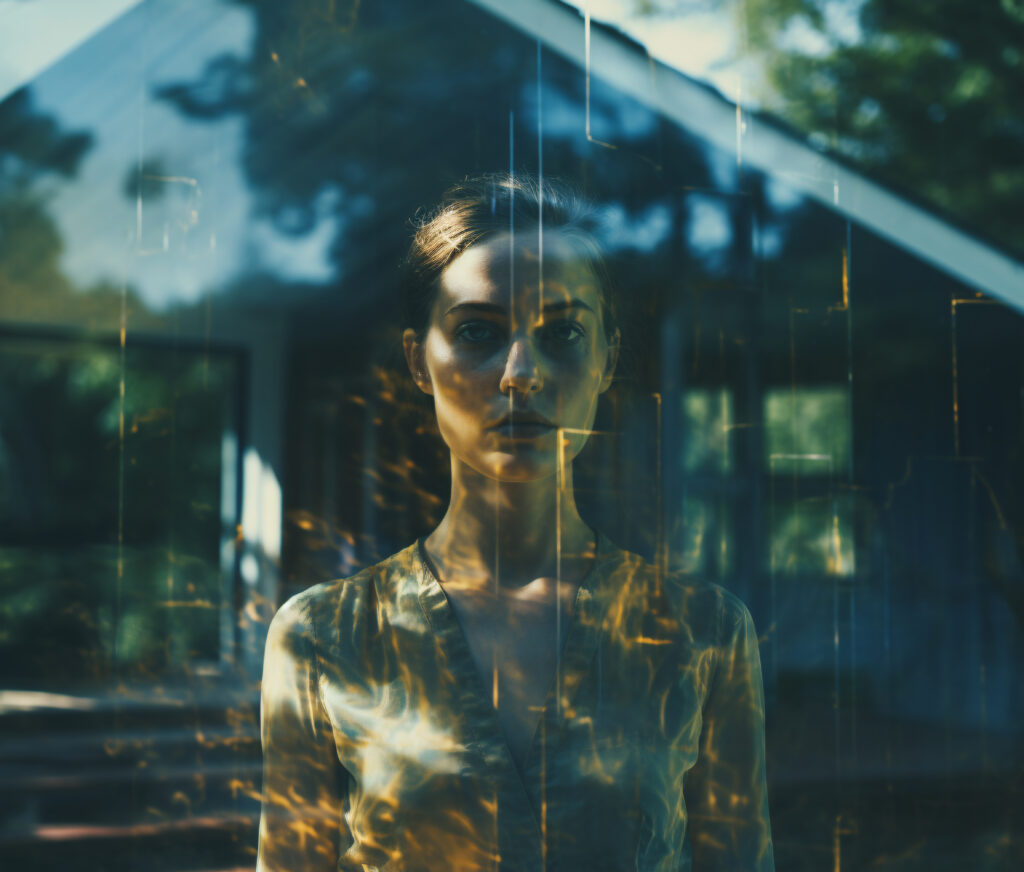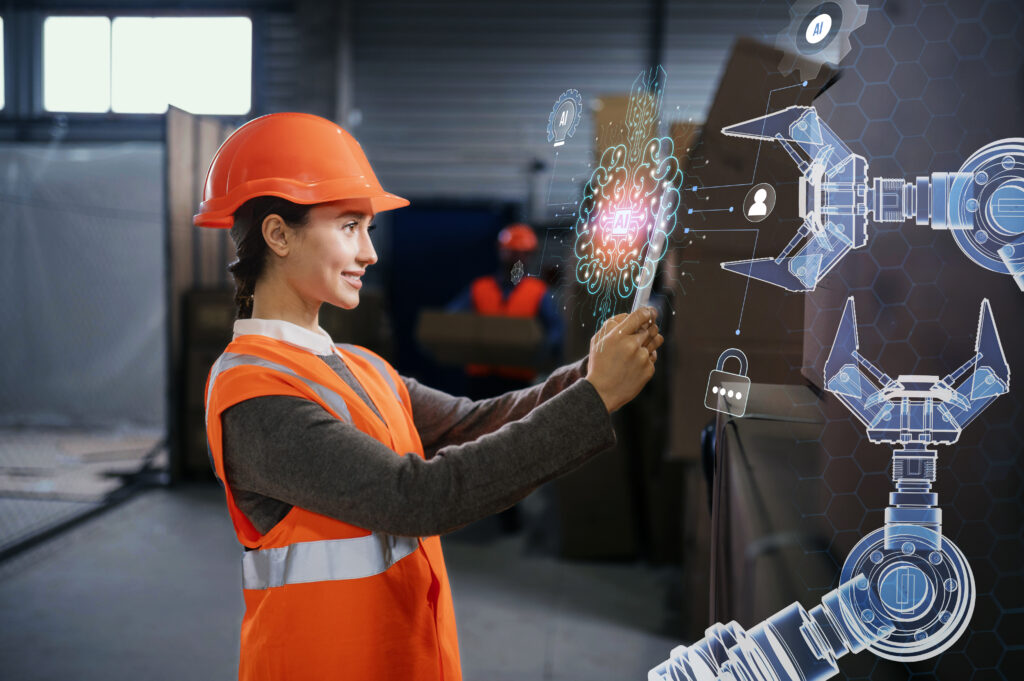AI’s Digital Art Transformation Algorithms
In digital art, the advent of Artificial Intelligence has catalyzed a paradigm shift, introducing a suite of algorithms redefining creativity and artistic expression.
Among these, neural networks and generative adversarial networks (GANs) stand at the forefront, utilizing vast datasets to learn and generate new, often unprecedented, visual forms. The intricacies of these algorithms—how they discern styles, interpret content, and synthesize them into novel creations—pose a fascinating subject of discussion.
Particularly intriguing is how these AI-driven tools mimic human creativity and extend it, pushing the boundaries of what is conventionally considered possible in digital art.
As we examine the mechanisms and outcomes of such transformative algorithms, one cannot help but ponder the implications they hold for the future of artistic endeavor and the evolving role of the artist in a world where machine intelligence becomes an inextricable part of the creative process.
Key Takeaways
- Neural networks and deep learning form the basis of AI algorithms that recognize patterns and make decisions in digital art.
- Generative Adversarial Networks (GANs) utilize two neural networks, the generator and the discriminator, to create new synthetic images and evaluate their authenticity.
- Evolutionary algorithms, such as genetic algorithm artistry, apply natural selection to generate visually appealing digital artwork through mutation and crossover operations.
- The future of AI in art involves continuous reassessment of techniques and their implications, as well as the development of reinforcement learning and algorithmic pattern recognition for creativity and pattern detection in digital art.
Neural Network Fundamentals

Neural networks, the cornerstone of contemporary AI-driven digital art, are computational models inspired by the human brain’s interconnected neural cells. These networks form the basis of machine learning algorithms, which develop the ability to recognize patterns and make decisions through exposure to vast training data. A neural network’s learning process involves adjusting the synaptic weights of connections between artificial neurons, a mechanism analogous to the brain’s method of strengthening or weakening connections based on experience.
A fundamental variant within these neural architectures is the deep neural network, a deep learning model characterized by multiple layers that enable extracting high-level features from raw input data. Specifically, convolutional neural networks, a class of deep neural networks, have shown exceptional aptitude in analyzing visual imagery, making them instrumental in generating and modifying digital art.
The intelligence of these AI models is further amplified by techniques such as generative adversarial networks (GANs), where two neural networks contesting with each other in a game-theoretic approach to improve their productive capabilities. Such advanced machine learning frameworks are reshaping the landscape of AI-powered creativity, leading to a surge in intelligent digital art forms.
Generative Adversarial Networks

Building upon the complexity of deep neural networks, Generative Adversarial Networks (GANs) introduce a dynamic framework for AI art creation that harnesses the tension between two distinct neural models. These two neural networks—the generator and the discriminator—play continuously. The generator strives to create new images that are indistinguishable from accurate data, while the discriminator aims to detect whether the pictures are genuine or produced by the generator. This adversarial process leads to the generation of high-quality, novel AI art.
| ComponentRole in AI Art Generation | |
|---|---|
| Generator Network | Creates new, synthetic images |
| Discriminator Network | Evaluates images for authenticity |
Generative AI, mainly through the use of GANs, has revolutionized the capacity of AI algorithms to train the model iteratively, improving the generative process as the AI art generators learn from each iteration. This adversarial mechanism refines the AI models’ ability to generate new art and contributes to the broader understanding of AI’s creative potential. Analyzing the outputs of GANs reveals the technical prowess of these AI art generators and the nuanced interplay of AI algorithms working to simulate and extend human creativity.
Evolutionary Algorithms in Art

Evolutionary algorithms represent a paradigm in digital art where the iterative process of natural selection is applied to generate visual aesthetics.
Genetic algorithm artistry leverages evolutionary design principles, relying on mutation and crossover operations to produce diverse artistic expressions subject to a selection process based on predefined fitness functions.
These fitness functions, often correlated with human aesthetic preferences, guide the algorithm towards creating visually appealing artwork, showcasing the potential of AI to innovate in the realm of digital creativity.
Genetic Algorithm Artistry
Harnessing the principles of natural selection, Genetic Algorithm Artistry employs evolutionary algorithms to iteratively generate and refine digital artworks according to predefined artistic criteria. This type of machine learning facilitates a creative process where artificial intelligence (AI) uses complex algorithms to simulate a generative network akin to a digital ecosystem.
Within this system, the algorithms can generate variations of art by selecting the ‘fittest’ pieces, which possess desirable attributes, and then mutating them to create AI art that is both novel and aesthetically appealing.
Creating new images involves continuous refinement through selection, ensuring that each artwork generation evolves toward the artist’s intended vision. Genetic algorithm artistry exemplifies the fusion of AI’s computational power with human creativity, leading to the emergence of unprecedented artistic expressions.
Evolutionary Design Principles
Delving into digital art, Evolutionary Design Principles utilize genetic algorithms to iteratively sculpt artistic creations through variation, selection, and refinement.
In this technique, AI catalyzes the art industry, generating a population of potential designs from which the most aesthetically compelling are chosen. These Generative algorithms, inspired by artificial intelligence, mimic natural selection to explore various design possibilities.
By applying evolutionary operators and selecting the best-fit designs, these algorithms create new ones that contribute to generating new images, thereby using AI art to push the boundaries of creativity.
This dynamic process evolves designs over multiple generations, enabling artists to generate innovative and adaptive artistic expressions that continuously redefine the landscape of digital art.
Fitness Functions Aesthetics
Guided by aesthetic judgments, Fitness Functions within Evolutionary Algorithms play a pivotal role in the digital art creation process, where they quantitatively assess and steer the development of artistic works towards predefined beauty standards. These functions are integral to the artificial intelligence systems that generate AI art, ensuring that the visual design evolves in an aesthetically pleasing direction.
- Evolutionary Algorithm Dynamics:
- Iterative refinement: Artworks undergo continuous transformation based on aesthetic evaluation scores.
- Aesthetic criteria calibration: The fitness function is fine-tuned to align with specific visual design goals.
- Diversity preservation: Ensures a range of artistic expressions while adhering to desired aesthetics.
The impact of AI in this context is profound, enabling AI tools to create art with precision and opening avenues for creating new, algorithmically-driven digital artworks.
Deep Learning for Style Transfer

Deep learning for style transfer harnesses the power of convolutional neural networks to blend one image’s stylistic elements with another’s structural details, fundamentally altering the landscape of digital art creation.
The technique has broadened the horizons of artists and designers by enabling the production of distinct visual experiences that merge classical styles with contemporary content.
However, despite its transformative potential, this domain faces challenges such as high computational costs and the intricate balance of content and style fidelity, which necessitate ongoing research and optimization.
Neural Style Transfer Basics
Neural Style Transfer (NST) leverages convolutional neural networks to artistically reconfigure the visual elements of an image by blending its content with the distinctive style of another work. This mechanism has revolutionized the method of creating art with AI technology.
- Core Concepts:
- NST algorithms analyze and decompose the input image into content and style components.
- The style transfer process then synthesizes a new image, infusing the input image’s content with the style features extracted from a second image.
- Applications:
- Artists use NST to generate art that merges photography with iconic art, including styles.
- NST can create new visual experiences by applying historical, artistic styles to existing images and creating novel artworks.
- Technical Insights:
- The iterative optimization technique inherent in NST fine-tunes the output to ensure the generated images retain the essence of the original content while exhibiting the desired artistic style.
Applications in Art Creation
Harnessing the power of convolutional neural networks, style transfer algorithms offer artists an unprecedented tool to fuse disparate visual elements, thereby expanding the boundaries of digital art creation. These deep learning models are adept at absorbing and applying intricate patterns from one piece of art to another, enabling the generation of AI art with distinct aesthetic qualities.
By processing users’ input, such as a text prompt or an existing image, these algorithms can be used to create art that marries content with a chosen artistic style. The artwork generated through this method can vary in complexity, from subtle shifts in texture to complete stylistic overhauls.
With advancements like Stable Diffusion and a text-to-image model, the capacity for generating images that resonate with human creativity continues to grow.
Challenges and Limitations
Despite the innovative potential of style transfer algorithms, they encounter several challenges and limitations that affect the quality and applicability of the resulting artwork.
- Technical Limitations
- Convolutional neural networks, while adept at style-content separation, can struggle with maintaining the semantic coherence of the original content.
- The balance between style and content often requires fine-tuning, which can be computationally expensive and artistically limiting.
- cGANs may produce artifacts or undesirable alterations, detracting from the visual intent of the artist.
- Ethical and Legal Concerns
- Intellectual property issues surround the use of copyrighted style images without consent.
- Determining who is responsible for creating the artwork—the algorithm designer or the user—remains a contentious issue.
- Ethical concerns arise when AI-generated art blurs the boundaries of art and challenges the traditional understanding of Natural Language related to art critique.
- Evolving Field of AI
- As AI continues to develop, the potential of AI in art necessitates continuous reassessment of techniques and their implications.
- Algorithms must evolve to address digital art creation’s artistic and ethical dimensions.
- Bridging the gap between AI capabilities and human artistic sensibilities is an ongoing challenge.
Reinforcement Learning for Creativity
Reinforcement learning has emerged as a transformative force in digital art, enabling artificial intelligence systems to develop creative skills through feedback-driven iteration and refinement. This method constitutes a paradigm shift in the generation of AI artwork, where machine learning models are not solely reliant on large datasets but can instead learn and adapt from the reactions to their outputs.
Networks employing reinforcement learning for creativity operate under a reward system that simulates aspects of human creativity, such as innovation and aesthetic appeal.
The creative process is revolutionized as these AI entities autonomously generate new images, iteratively adjusting parameters to align with criteria that mimic artistic appreciation. This encourages self-directed evolution, pushing the boundaries of what machines can create.
However, the application of reinforcement learning in digital art is not without its ethical concerns. As AI systems generate artwork with increasing competence, questions arise regarding the originality of AI-created content and the potential for these systems to disrupt traditional notions of artistic authorship.
Algorithmic Pattern Recognition
Algorithmic Pattern Recognition leverages sophisticated machine learning algorithms to detect and decipher intricate patterns in digital art. Utilizing AI-driven techniques, this domain of Artificial Intelligence has significantly advanced the capabilities of image classification and pattern recognition. By processing vast datasets of images and video, neural networks within these systems have developed a nuanced understanding of artistic elements.
- Core Components of Algorithmic Pattern Recognition:
- Data Processing: Involves cleansing and preparing datasets for optimal algorithm performance.
- Data Augmentation: Enhances data variability, aiding in robust model training.
- Feature Extraction: Identifies unique attributes within the art for the algorithms to learn.
- Model Development:
- Neural Network Architecture: Designs that mimic the human brain’s ability to recognize patterns.
- Training and Validation: Iterative process where models were trained and improved using feedback.
- Application in Digital Art:
- Style Analysis: Decodes artistic signatures to inform style transfer applications.
- Generative Art: Employs learned patterns to create new, original pieces of AI-generated art.
In this analytical context, deep learning represents a subset of machine learning that is particularly adept at discerning complex patterns. These algorithmic developments are pivotal in enhancing digital art’s visual aesthetics and advancing the frontier of creative AI expressions.
FAQs
What is Neural Style Transfer (NST), and how does it transform digital art?
Neural Style Transfer is an algorithm that applies the artistic style of one image to the content of another. It transforms digital art by blending the style of well-known artworks or chosen styles with existing digital images, creating visually appealing compositions.
Can Deep Reinforcement Learning algorithms be applied to digital art transformation?
Yes, Deep Reinforcement Learning algorithms can be applied to digital art transformation. They can optimize artistic processes, automate the generation of specific content, or adapt to user preferences through reinforcement learning frameworks.
How do these algorithms impact the creative process in digital art?
These algorithms impact the creative process by introducing automation, aiding in exploring new styles, enabling collaboration between human artists and machines, and expanding the possibilities of what can be achieved in digital art.
Can artists control the output of these algorithms in digital art transformation?
Yes, artists can control the output by adjusting parameters, providing input, and guiding the training process of these algorithms. Many tools and platforms provide user-friendly interfaces that allow artists to customize and shape the transformation.
Are there limitations to using AI algorithms in transforming digital art?
Limitations may include potential biases in training data, challenges in achieving truly novel outputs, and the need for careful consideration of ethical implications. The interpretability of AI-transformed digital art is also an ongoing area of exploration.
Can AI algorithms be used for real-time transformations in digital art creation?
Yes, some AI algorithms can be optimized for real-time transformations in digital art creation, depending on the complexity of the task and the computational resources available.